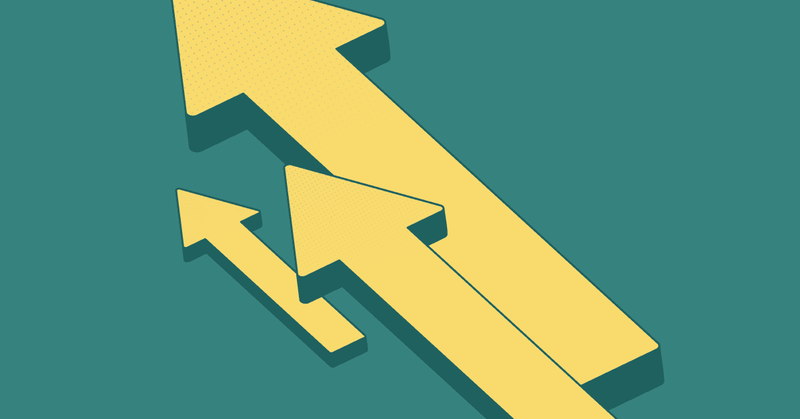There are currently more than 30,000 SaaS companies globally. It's not hard to see why.
SaaS is a lucrative business model that promises predictable income when processes and people are set up correctly. Companies like Zoom, Canva, Slack, Intercom have achieved great success and it's not hard to see why a new SaaS business pops up every day.
However, revenue is just the end result, before any money gets to the bank, you need to earn it. This is where SaaS sales come in. This model is different from selling traditional goods and services and there are many pitfalls and dangers to watch out for.
In this blog we’ll explore how it works and how you can implement it yourself.
What is SaaS sales?
SaaS sales involves selling software as a service (SaaS) to customers using a sales model. What makes SaaS sales different is that it's a subscription-based pricing model, meaning that the ultimate goal is acquiring new customers and driving revenue through retention.
The SaaS sales process explained
The customer journey from not knowing what kind of problem someone has to become a paying customer is a long one in SaaS sales. No matter what kind of software you sell, there are common steps in the sales process.
Lead generation
Before finding people who want to purchase, you'll need to find people who are interested in hearing what you have to say. These are leads and your goal is to turn them into customers.
There are several different types of leads:
- IQL - information qualified leads
- MQL - marketing qualified lead
- PQL - product qualified leads
- SQL - sales qualified leads
Leads are categorized based on how much information someone has about SaaS products and how interested they are in purchasing.. But before they even get to this stage, they need to be attracted to your brand, website, phone or contact form.
Some common methods of lead generation for SaaS include:
- email marketing
- content marketing
- PPC advertising
- social media marketing
- SEO
- Affiliate marketing
Which one is best? It depends on what kind of model you want to pursue. Common SaaS sales models allow for all of these lead generation methods, but some may have higher customer acquisition cost than others.
Lead qualification
Qualification is the process of sorting your leads according to how likely they are to turn into customers. With a good customer relationship management tool, you can qualify leads and place them in the right spot in the sales funnel with just a few clicks.
Some of the ways you can qualify leads include:
- How ready are they to buy?
- Are they aware of your competitors? Which ones?
- Do they have the budget to purchase your SaaS solution?
- Is now the right time for the potential customer to make a purchase?
- Are sales representatives talking to the right person who can make a purchasing decision?
Based on all of these criteria, you can give each lead a score. The higher the score, the more urgently your sales reps need to reach out.
Outbound prospecting (outreach)
Once your sales development representatives have a list of leads that can be contacted, it's time to do outreach. There are many ways you can do prospecting, but most commonly, it's done through a combination of emails and phone calls.
There are typically three roles involved in prospecting:
- SDRs (sales development representatives) - they do the grunt work of making cold calls
- BDRs (business development representatives) - they focus more on the potential customers coming from inbound
- AEs (account executives) - they focus on the closing part of sales, which we'll cover in a minute
Demos
Demos are essential when converting leads into customers. As opposed to self-service options, some SaaS companies offer product demos (either pre-recorded or live) to explain how the product works and what value it brings.
Demos are a chance for customers to ask questions and for sales reps to highlight your product's selling points. They are one of the quickest ways to speed up the sales process.
Closing
Closing is the final act of the sales process in SaaS.. To close a deal in SaaS sales, especially with more enterprise deals, it's crucial to find the key decision makers in the company. This way your SaaS sales representative can talk to them directly.
Find out their concerns, needs, constraints and budget and use it as a starting point. If they are on the verge of purchasing, you can create a sense of urgency and offer a limited-time promotion or a discount.
If this doesn’t work, then there are a range of closing techniques you could implement, depending on what SaaS solution you're selling and who the customers are.
The SaaS sales cycle and how it works
A SaaS sale is a process that can take anywhere from a few days to a few months to complete. Usually, the more expensive the product, the longer it takes to close a deal. Below, we've outlined the typical stages of a SaaS sales process.
A SaaS sales cycle is typically long
The average length it takes to close a deal in the SaaS sales model is 84 days. As mentioned, enterprise sales can take even longer so you need to devise a SaaS sales strategy that both motivates your sales teams and encourages customers to purchase sooner.
No one benefits from a lengthy sales process. SaaS sales reps can get discouraged as it will take months to get their commission and your customers may actually forget what your product is about by the time they have to pull the trigger. In the end, your revenue is going to suffer.
This is why shortening the cycle in the SaaS sales model is crucial.
How to shorten the sales cycle
The shorter it takes for your sales reps to get someone on board, the better your bottom line.
Here are some practical ways to make the SaaS sales cycle shorter.
You can offer a free trial to your customers to help them see the value of your product sooner. SaaS sales reps can but do not have to get involved, as the customer can explore the product on their own.
You can also create a variety of different sales materials for potential customers to get educated before they even talk to sales reps. Examples include:
- interactive product guides
- ebooks covering different use cases
- pre-recorded demos
- video walk-throughs
- detailed FAQ pages
- changelogs made with free changelog tools
This can make the SaaS sales process more efficient as customers will have more knowledge before they attend a live demo or talk to a sales rep. When done the right way, it can lower your customer acquisition cost too.
Three key SaaS sales models
There are three main SaaS sales models. When selling web based software, the decision of which model to choose can make a major impact on overall future sales.
We can't tell you which SaaS sales model is the best and will lead to the highest monthly recurring revenue (MRR). That will depend on many things, such as the type of product, the target audience and the kind of goals your sales team sets for themselves.
Self-service sales model
In the self-service SaaS sales approach, the sales team has few interactions with the customers. In other words, it's the customers who do most of the work themselves. They find you, sign up for a free trial, explore the product, book a demo and eventually purchase on their own.
The self service model works best for lower-priced products where the cost of involving sales reps would outweigh the return from the sale. In other words, it's cheaper for the customer to go through the entire customer journey on their own.
The key to making this SaaS sales strategy work is to empower customers with great sales collateral so they can make an educated decision on their own.
Transactional sales model
A transactional sales model means that sales teams are involved to help the customer make a purchasing decision. This means that the product you're selling has a higher price to justify the cost of acquiring new customers.
Moreover, since a sales rep has to talk to each individual customer, the approach has to be completely personalized. It's not unusual for the sales team to reach out to and talk to the same account several times before closing a deal.
In this sales process model, the sales team has a certain level of independence. The SaaS sales rep can offer discounts and give special offers to help move the customers through the sales funnel.
Enterprise sales model
In the enterprise sales model, the process is also sales-led. Potential customers rarely get to try the product before talking to someone from the sales team. They can get some product info, but it's up to the sales reps to provide the crucial information and move them closer to signing a deal.
One key characteristic of this model is that the sales cycle is considerably longer and can easily go into months. It's not unusual for enterprise customers to have several stakeholders who need to sign off before a deal is done.
To succeed, the sales team needs to have extensive technical knowledge of the product. As customers get on calls and demos, they'll have questions that junior sales reps won't be able to answer.
Top SaaS sales metrics to monitor
To stay on top of your SaaS sales process and make sure you're going in the right direction, you need to follow certain metrics. You don't necessarily need to use and follow all of these KPIs, but keeping a close eye on the majority can put your sales teams on the right track.
Customer acquisition cost (CAC)
CAC is the overall cost of acquiring new customers. This includes the costs of marketing, outreach and various sales efforts, all the way to closing a deal. For SaaS companies to be profitable, the overall CAC needs to be lower than the customer lifetime value.
How to calculate it: Cost of sales and marketing divided by the number of new customers acquired.
The average CAC for a SaaS solution depends on many factors and it can go from $50 to tens of thousands of dollars.
Monthly recurring revenue (MRR)
Monthly recurring revenue is the total subscription revenue generated from your customers on a monthly level. For SaaS businesses, MRR and ARR (annual recurring revenue) are some of the most vital signs of a company's good health.
How to calculate it: MRR is the total value of all subscriptions every month.
There is no definitive answer for what a good MRR is for SaaS companies. However, you should aim for a 10-20% MRR growth rate, month on month.
Customer lifetime value (CLV)
Customer lifetime value is the total monetary value a customer brings to your business over their course of being a customer of your business. For SaaS companies to remain profitable, the CLV should be as high as possible, ideally higher than the customer acquisition cost.
How to calculate it: average revenue per user (ARPU) x lifespan of the customer
CLV:CAC ratio
As mentioned above, you should be earning more from existing customers than you're spending on acquiring new customers. According to sources such as Paddle, the ideal ratio of CLV to CAC is 3:1, which means that for every dollar you spend, you earn 3 dollars.
When selling SaaS, this is one of the most important SaaS sales metrics to monitor. Even if you have an amazing product that saves a specific pain point, it won't matter much if it's not financially viable.
How to calculate it: divide your CLV with your CAC value.
Customer churn
Churn happens when a customer stops using your product for some reason. This can be because they found a competitor that better suits their needs, they’re disappointed in your product, an increase in pricing, or something entirely different.
Needless to say, successful sales teams and SaaS companies keep their customer churn levels very low. A good SaaS business keeps their churn in single digits, ideally under 3%. Make sure to constantly measure your churn levels because a high churn is a customer retention killer that can drive any SaaS company bankrupt.
How to calculate it: Number of customers lost during a time period/total number of customer over a time period x 100
Top tips for SaaS sales
Ready to refine your SaaS sales process and skyrocket your revenue? Here are some practical tips for reps, account managers and business leaders.
Have impeccable knowledge of your product
Business development managers need to know the product inside and out. If you're serious about shortening your sales cycles, arm your staff with the right materials to learn from.
An amazing starting point is to listen in on sales and customer support calls to find out the most common questions and objections that potential customers have about your product.
This is also a good opportunity to hear how your product fares against the competition.
When your SDRs have some downtime, you can direct them to your review pages on websites such as G2, Capterra, GetApp and others. The reviews here are mostly unbiased and paint a good picture of what your SaaS software does well and where you need improvements.
Last but not least, encourage your team to sign up for free trials and try out the product themselves. It's one of the easiest ways to see how your target market perceives what you're selling.
Follow up (many times)
If you have a sales qualified lead, chances are that they are not going to convert the first time you reach out to them. In fact, it's common practice in the SaaS industry to reach out several times before you get a reply.
People get busy, forget to reply, you catch them at the end of their work day, something comes up - which is why sales professionals need to follow up at least 3-5 times with calls and emails before expecting any kind of results.
When you do follow up, personalize the call or email based on the data you have stored in your CRM. This will further increase your chances for success.
Set up drip and nurture campaigns
Manual prospecting work can wear out any sales rep. And given the length of the sales cycle, it's best to automate as much of the tedious work as possible. You can do that with drip and nurture campaigns.
As soon as someone shows interest, push them down the sales funnel by putting them on a segmented email list. From this point, you can keep sending them nurture emails, reminding them about your offer, until the moment that they take action.
Do outbound prospecting after sign-up
When someone signs up for a demo, walkthrough or a free trial, they've just started their journey down the sales funnel. Also, it's quite a convenient time to reach out and call them.
Ask them what questions they have, what concerns they have about your product, what would make them consider a competing product and similar questions.
Once you have the information from this call, write it down in your CRM in the notes field for the contact. You can use this for further qualifying the lead.
Qualify first, then offer a demo
Not everybody needs a demo - it's a way to get the true value of SaaS products, but at the same time, they are very time consuming. Each demo can take an hour away from your sales and customer success team, which is the time they could have spent on prospecting or closing.
Depending on how qualified the lead is, you can either offer them a demo of your SaaS product or push them to talk to an account executive so they can close.
In either case, the data acquired from the interaction can be used for qualification. And if it's a good fit, the data can help offer a more personalized demo.
Upsell and cross-sell customers as you close
If you want to sell SaaS, there are countless opportunities to get more out of a prospect you're getting in touch with. If someone is on the cheapest paid plan, seize the opportunity to sell them an upgrade with more seats or get them an annual plan instead of a monthly one with a sizable discount.
Once you get better at SaaS selling, you can identify leads who are just about to close. Instead of jumping at the opportunity to get their signature and money, try and offer some extras for a larger customer lifetime value.
Conclusion
SaaS sales may sound complex, especially with the many steps involved and the intricacies of the long sales cycle. But take it from companies such as Zoom, Canva and other SaaS industry giants - you can break into millions by selling software tools.
One great starting point is using a CRM to organize your sales efforts and keep your sales and marketing teams aligned. Capsule CRM strikes a perfect balance between having advanced features and being easy to use.
Get started with Capsule and sign up for your free 14 day trial.




